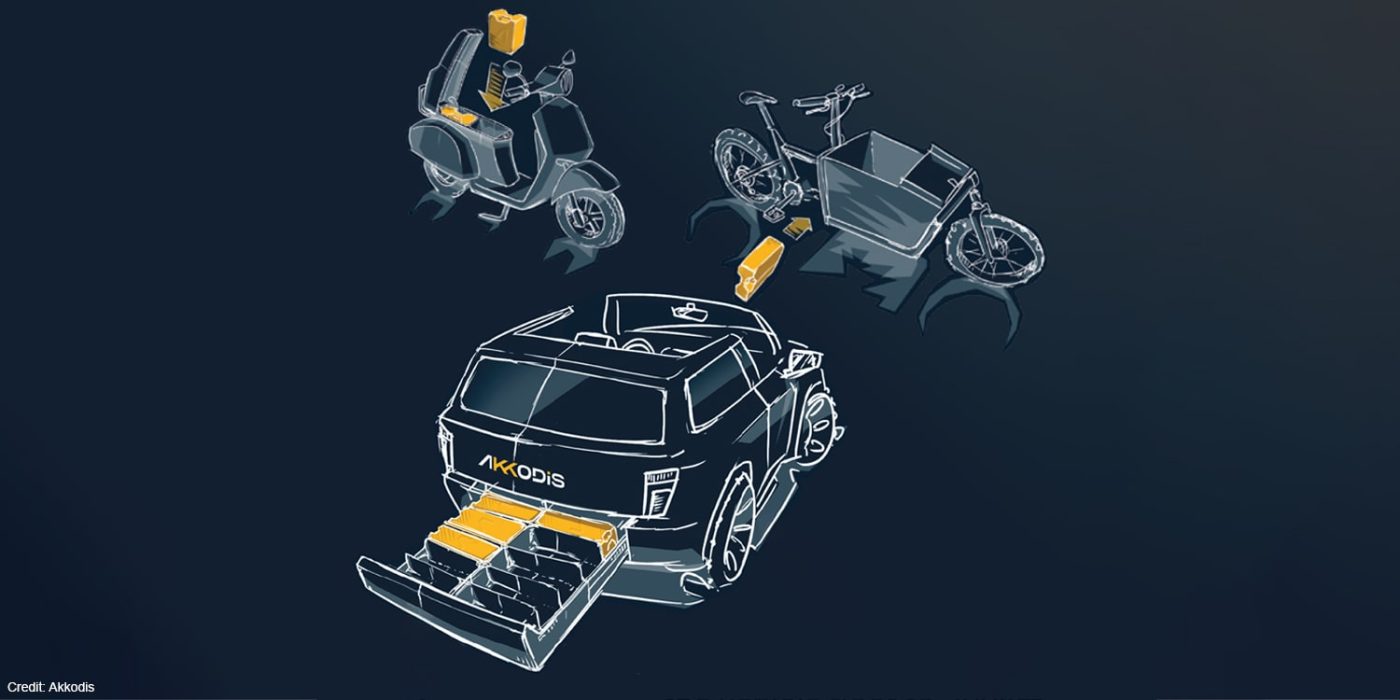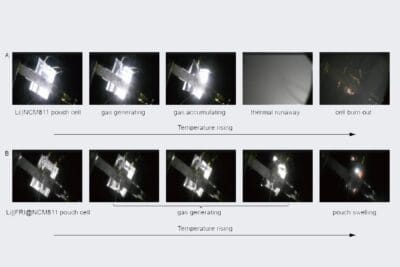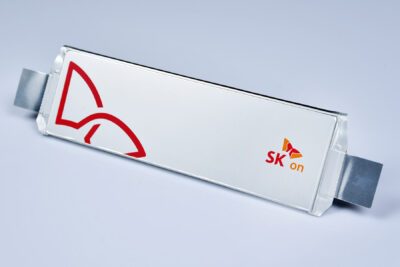IAA: Akkodis shows battery swap concept
Swiss digital engineering firm Akkodis has presented a sustainable mobility ecosystem at the IAA in Munich. At its heart is an exchangeable battery that can be swapped between electric cars, e-scooters or cargo electric bikes – and even cell chemistries.
To illustrate the concept, Akkodis brought a self-developed Urban Lifestyle Vehicle (ULV) to Munich. This has a permanently installed battery complemented by two compartments on the left and right, into which users can insert the extra batteries. The module resembles a small briefcase. It measures 48x21x12 centimetres and weighs about 18 kilograms. The current module has NMC cells and delivers up to 4.1 kWh and 85 Ah. When Anne Friedrich, Head of Marketing and Communications for Akkodis for Germany, puts a fresh module into the tiny EV, she extends the range by a good 50 kilometres.
The interchangeable batteries allow the range extension without “having to lug around unnecessary weight”, explains Friedrich. However, the ecosystem presented should inspire the entire mobility industry “to think further, beyond the individual vehicle and to connect several vehicles”.
The Smart Battery is designed for diverse cell types. “We want to standardise the module regarding size and weight. But what you put in can depend on the requirements of the battery module,” explains Tina Angerer, Head of Battery Concept. The young physicist designed the Akkodis Smart Battery to ensure “innovative flexibility” in the mobility industry. In other words, while the size and interface of the Akkodis pack are standardised, different battery chemistries and cell types can make the module.
“If you want a battery module that delivers power, choose the performance variant. If you want a battery module that can run long cycles, you can choose an LFP module,” explains battery expert Angerer. “We are currently evaluating a fast-charging LTO module that can do up to 6C.” An AI-based battery management system with cloud connectivity helps determine battery status and facilitates communication between vehicle types in the mobility ecosystem.
It should also be possible to integrate the power packs in home storage. The Smart Battery is already designed in such a way that it can be used as second-life storage. But even if the batteries are still good for the vehicle, they can be connected to the home network, according to the concept. Angerer holds out the prospect of an open packing station for the home, where the batteries can be charged and used as buffer storage. If you need more range in one of the vehicles on a given day, you can take the battery briefcase out of the station and put it in the vehicle. There will also be battery exchange stations in the public sector. But then, just like a Packstation, with a door for each compartment – for more security.
But back to the road: because of its versatility, Friedrich also sees the exchangeable battery in large vehicles. Like the car on display, only a small battery would have to be permanently installed and supplemented by exchangeable batteries. In a graphic, Akkodis shows that a vehicle can be equipped with a whole drawer full of Akkodis Smart Batteries. These would then be placed in the boot, for example. According to Friedrich, this is a much more sustainable approach since the batteries can be shared, especially within fleets, but also by different means of transport.
By the way, The Akkodis Urban Lifestyle Vehicle was only developed as a demonstrator for the trade show in Munich. There are currently no plans for a production run of the ULV.
Reporting by Carla Westerheide, Munich.





0 Comments